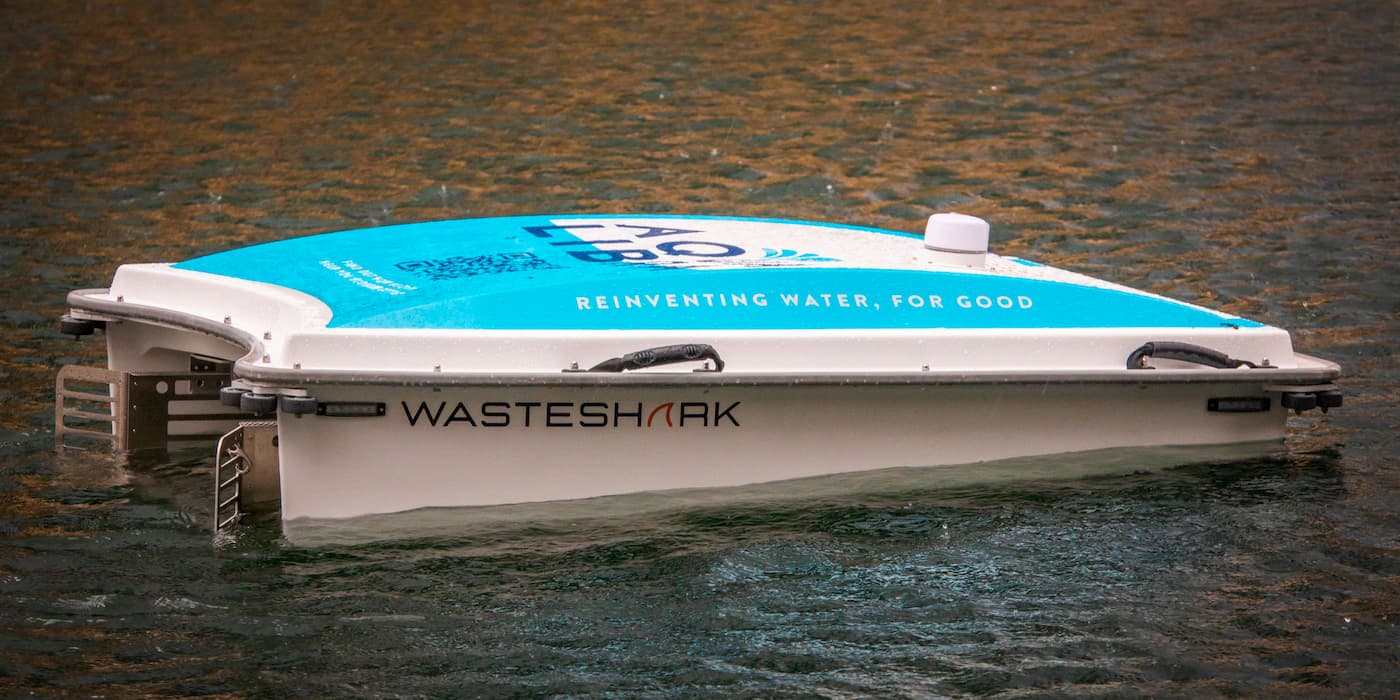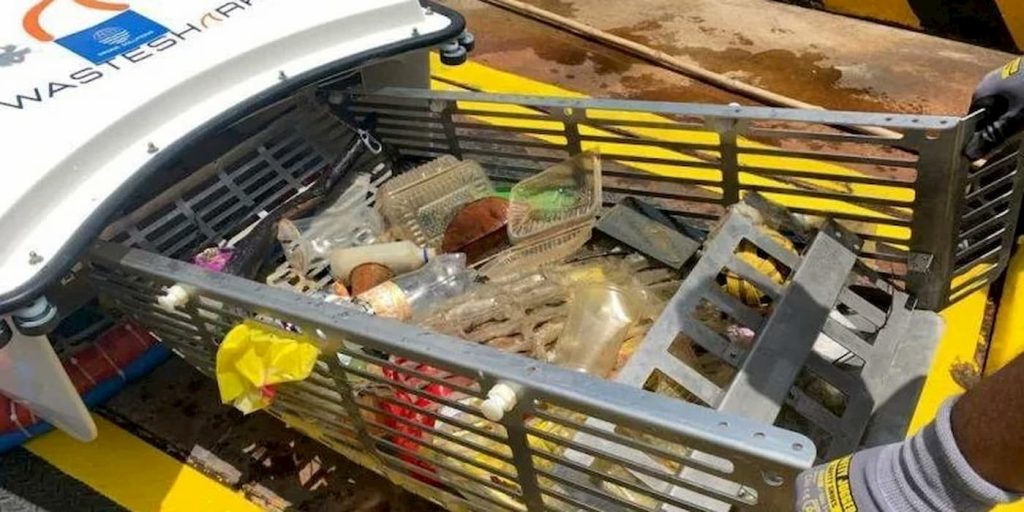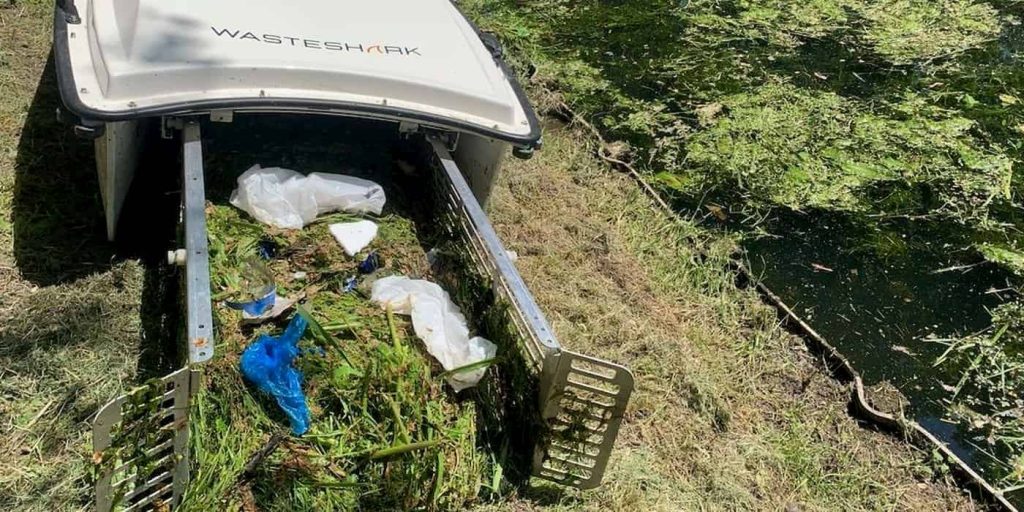
If you see this shark heading toward you with an open mouth, don’t worry – it’s designed to catch plastic and other waste that destroys the water and its inhabitants rather than swimmers. The WasteShark is a mini electric catamaran-shaped robot that eats plastic, debris, and other things that don’t belong there while collecting data on water quality.
WasteShark is eating plastic while cleaning our waters
WasteShark creator, Richard Hardiman, says the idea came about in South Africa after seeing “two people fishing rubbish out of the water with a fishing net.”
Hardiman thought there must be a better way. With a background in engineering and a passion for sustainability, Hardiman got to work. And in 2016, with the help of the PortXL program, he developed the idea as part of his new start-up, RanMarine Technology.
The electric WasteShark can navigate waters autonomously for 3 miles (5 km), collecting more than 1,100 pounds (500 kg) of plastic and other waste or pollution with an “open mouth” design.
Powered by two electric thrusters and controlled via 4G, the robotic shark can prowl through the water for up to 6 hours in autonomous mode or 8 hours with remote control.

In addition to cleaning plastic, the electric WasteShark can also collect natural materials such as algae, duckweed, and other aquatic plants while collecting water quality data.
The WasteShark is purely electric, with no other noise or light pollution to damage the environment or wildlife inhabiting it on its travels.
In a recent interview with Reuters, Hardiman said, “We have two versions: one that can be remotely controlled or one that is autonomous,” very similar to an autonomous vacuum cleaner. He added:
It has batteries inside, it so it’s purely electric. And while it’s running around, it’s also measuring the quality of the water as well.
According to Reuters, the plastic-eating shark is devouring waste in the River Thames, removing the equivalent of over 22,700 plastic bottles daily.
The WasteSharks can be purchased for roughly $24,600 or leased for around $1,200 per month.

Electrek’s Take
As the brains behind the WasteShark, Hardiman dreams of having millions of these electric plastic-eating robots deployed not only to clean the water of waste but also to collect data on the quality of the water.
According to information from the World Wildlife Fund, which helped deploy the first WasteShark in the UK, 8 million tons of plastics are dumped in the oceans each year, with significant consequences to wildlife.
For example, 90% of the world’s sea birds have plastic fragments in their stomachs, and up to 80% of mussels taken from several British beaches contained microplastics.
It’s a growing epidemic, and if we don’t get it under control and reverse the damage we have already caused, it could threaten the existence of certain species altogether.
Products like WasteShark can help clean our waters. Next up, we need a solar-powered version that can tackle the plastic in the deep ocean.
FTC: We use income earning auto affiliate links. More.

Comments